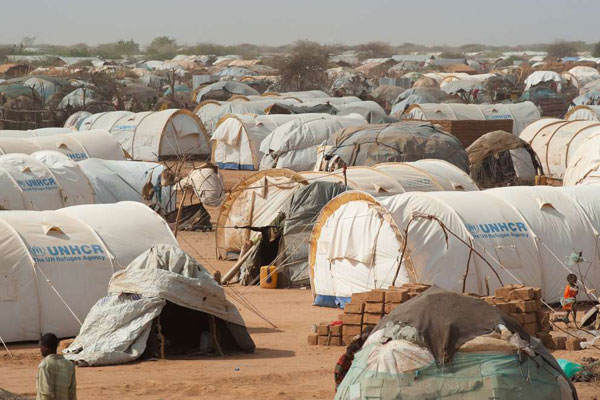IGAD pushes for harmonised migration data amid rising displacement

The report, covering 2010 to 2022, reveals that the number of international migrants in the region has surged by nearly 66 per cent, rising from 4.1 million in 2013 to 6.8 million in 2022.
Migration across the Igad region is rapidly increasing, highlighting the urgent need for stronger data systems, harmonised statistics and evidence-based policies to guide collective action, a new report has shown.
Speaking during the launch of the second edition of the IGAD Population and Migration Statistics Report, Igad deputy executive secretary Mohamed Ware stressed the importance of accurate information in shaping national and regional responses.
“It is through availability of accurate, reliable and timely data that we can develop evidence-based policies and national development plans to achieve the prospects of a resilient, peaceful, prosperous and integrated region where citizens enjoy a high quality of life,” Ware said.
The report, covering 2010 to 2022, reveals that the number of international migrants in the region has surged by nearly 66 per cent, rising from 4.1 million in 2013 to 6.8 million in 2022.
Ongoing conflicts in Sudan, South Sudan and Somalia, political instability, droughts and food shortages remain the main drivers of displacement.
By the close of 2022, the eight member states, Djibouti, Eritrea, Ethiopia, Kenya, Somalia, South Sudan, Sudan and Uganda—hosted 4.3 million refugees, representing one out of every six refugees worldwide.
Host communities, many already struggling, continue to share limited resources such as water, education and health services with displaced populations.
The main routes of migration include the Eastern corridor through Yemen into the Middle East, the Northern path through Sudan and Libya into Europe, and the Southern route through Kenya and Tanzania towards South Africa.
According to Igad statistician Charles Ogola, the region’s population reached 283 million in 2022, up from 217 million in 2012, covering about 5.2 million square kilometres, roughly a fifth of Africa’s population.
He noted that the GDP stood at $338 billion (Sh43.7 trillion), with a working-age population of 169.7 million, nearly half of them women.
The labour force rose from 81.8 million in 2010 to 117.5 million in 2022.
“The working age migrants comprised 63.3 per cent of the total migrants,” Ogola explained, adding that women and children make up the majority of refugees and asylum seekers. He pointed out a large gender gap in labour participation, with 69.6 per cent for men compared to 47.6 per cent for women.
Djibouti’s representative Oumalkaire Ahmed underlined the role of migration in shaping the region’s development, stressing the need for credible, comparable and comprehensive data.
“For us to manage this phenomenon effectively, we must understand it first, by ensuring we have credible information that is easily comparable and also very comprehensive,” she said.
Ahmed urged member states to strengthen partnerships and commit to producing reliable data and reports that will inform sound policies.
“Remember, migration is about the people, their aspirations, their challenges and contributions. So we need to have robust data so that we can have policies that harness the protection of migrant workers,” she added.
Kenya National Bureau of Statistics director general Macdonald Obudho, in remarks read by acting population statistics director Rosemary Bowen, said migration is shaped by a complex interplay of social, economic, political and environmental factors.
Obudho described migration as both a challenge and an opportunity, noting its role in growth, cultural exchange and regional integration, but also the governance issues it raises.
“However, it also presents significant governance challenges, particularly in ensuring safe, orderly and regular migration while addressing irregular migration and its associated risks,” he said.
He reminded that Kenya has long been a key migration hub, serving as a place of origin, transit and destination. Obudho further noted that the report highlights the need for consistent definitions, methodologies and collection systems to ensure reliable and comparable statistics.
“As we launch this report, let us commit to implementing its recommendations and filling the gaps where necessary. Let us strengthen our national statistical systems, enhance regional cooperation and invest in the capacity of our institutions to collect, analyse and utilise migration data,” Obudho said.
